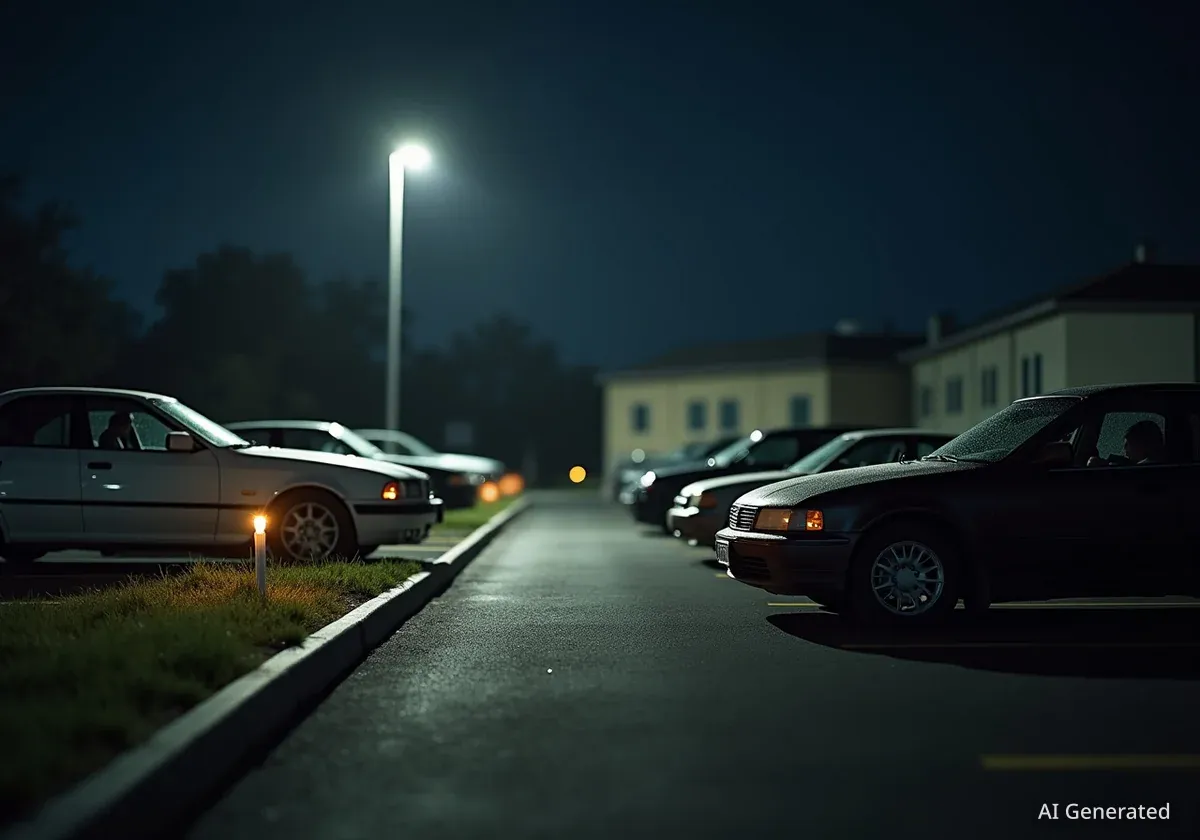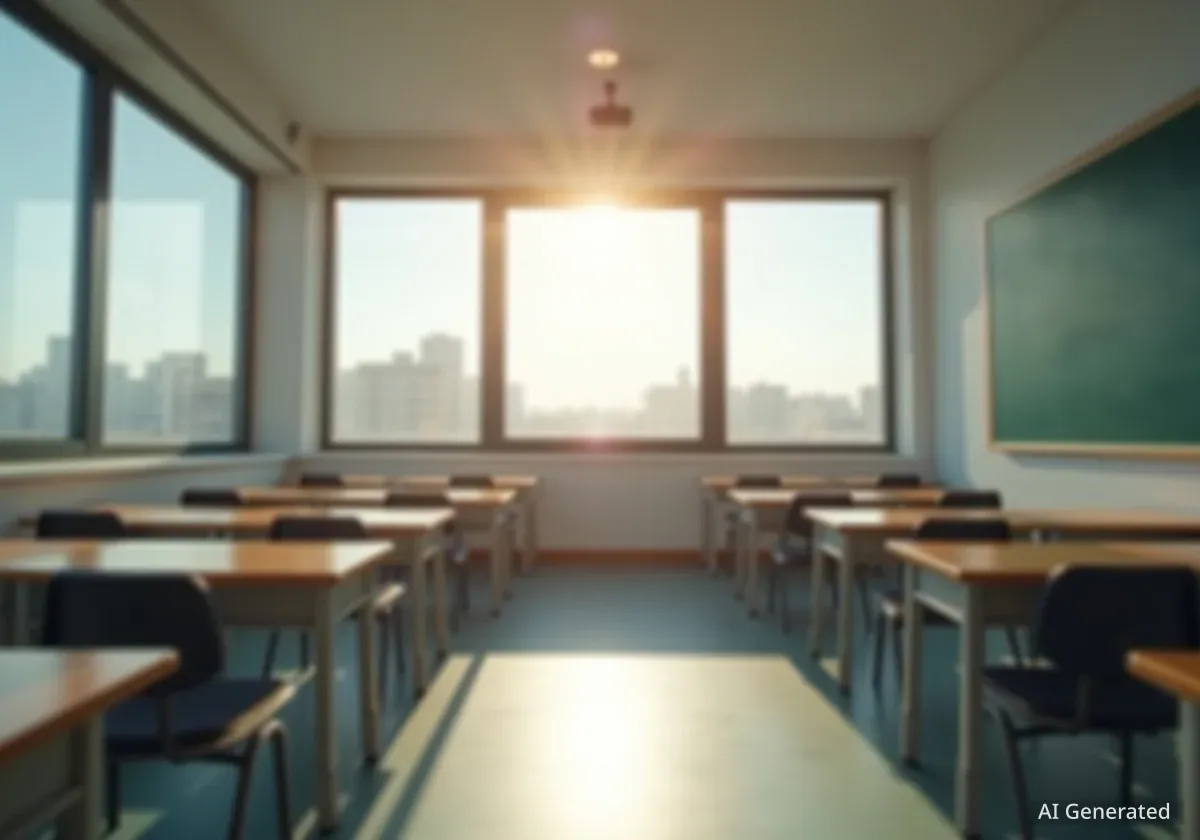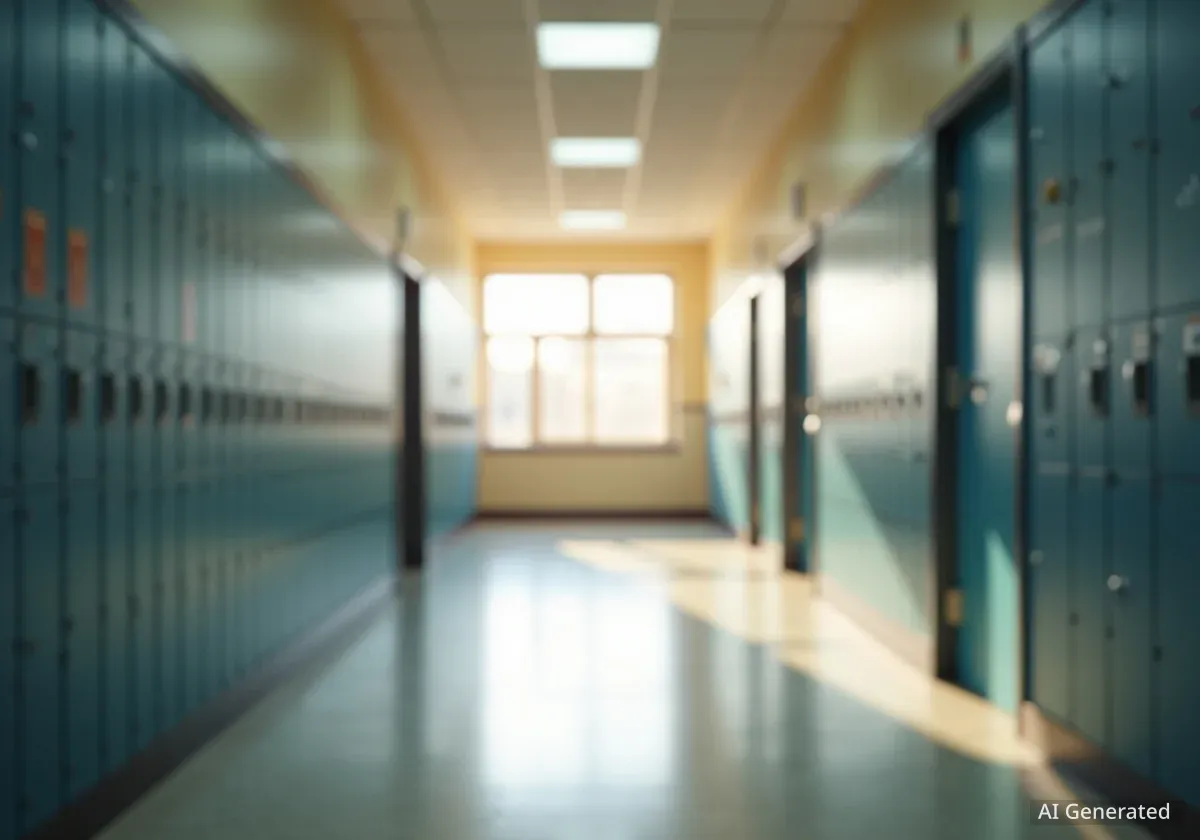At Long Beach City College, an ordinary parking lot transforms into a sanctuary each night. Designated as Parking Lot N, this section of asphalt provides 15 safe, designated spaces for students who have nowhere else to sleep but their vehicles. The program offers a critical lifeline for a growing number of students facing housing insecurity.
For Edgar Rosales Jr., a student at the college, his gold 2007 Lexus sedan is more than just transportation; for the past year, it has also been his home. Every evening around 8 p.m., he joins a small community of his peers in the lot, a stark illustration of the student homelessness crisis affecting higher education institutions across California and the nation.
Key Takeaways
- Long Beach City College operates a "Safe Parking Program" in its Parking Lot N, offering 15 overnight spaces for homeless students living in their vehicles.
- The initiative provides a secure and stable environment for students to rest, allowing them to focus on their studies without the constant fear of being displaced.
- Student homelessness is a widespread issue, with studies indicating that nearly one in five community college students in California has experienced homelessness.
- The program highlights an innovative but temporary solution colleges are implementing to address the basic needs of their most vulnerable students.
The Reality of Student Homelessness
To the average observer during the day, Parking Lot N is indistinguishable from any other campus parking area. It's a simple, functional space filled with the cars of commuting students and faculty. But as the sun sets and the campus empties, its purpose shifts dramatically. It becomes a registered safe haven for students like Edgar Rosales Jr.
For roughly a year, this parking lot has been his most consistent address. The program, officially known as the Safe Parking Program, allows enrolled students who are living in their cars to park on campus overnight without fear of ticketing or being asked to leave. It is a quiet, discreet acknowledgment of a difficult reality: for many, the pursuit of higher education comes at the cost of basic housing stability.
A Growing Crisis in Higher Education
Student homelessness is not an isolated issue. According to a 2019 report from The Hope Center for College, Community, and Justice, an estimated 19% of community college students across the United States had experienced homelessness in the preceding year. In California, the numbers are particularly stark, with some surveys showing that as many as one in five community college students lack a stable place to live.
These students often face immense challenges, balancing coursework and exams with the daily struggle of finding a safe place to sleep, a meal, or a shower. Programs like the one at Long Beach City College are designed to alleviate at least one of these burdens.
How the Safe Parking Program Works
The initiative at Long Beach City College is structured to provide safety and support. The 15 allotted spaces are available to students who have registered with the college's Basic Needs Program. This ensures that participants are not only given a parking spot but are also connected with other essential resources, such as food pantries, financial aid assistance, and counseling services.
Security is a key component. The lot is monitored, providing a level of safety that is absent when parking on a public street or in a commercial lot. This allows students to rest without the anxiety of a potential break-in or being told to move by law enforcement. For students trying to maintain academic performance, a secure night's sleep is invaluable.
"Knowing you have a safe place to park every night changes everything," explained a student advocate familiar with similar programs. "It removes a huge layer of daily stress. Instead of spending hours searching for a spot where you won't be bothered, you can use that time to study or prepare for the next day."
A Day in the Life
For students in the program, the routine becomes a careful balance of academic and personal life conducted within the confines of a vehicle. Mornings often involve using campus facilities like gyms for showers and libraries for studying. The car serves as a bedroom, a closet, and a private space for reflection.
Edgar Rosales Jr.'s experience is typical for many in his situation. His gold Lexus is organized to serve multiple functions. The back seat holds his belongings, while the driver's seat is where he completes assignments on a laptop. The simple act of reclining his seat at night in Parking Lot N represents a small but significant victory against the instability of his circumstances.
By the Numbers: Student Housing Insecurity
- 50%: The percentage of community college students in a national survey who reported experiencing housing insecurity (difficulty paying rent or utilities).
- 19%: The percentage of California community college students who reported being homeless.
- $2,200+: The average monthly rent for a one-bedroom apartment in Long Beach, California, a figure far beyond the reach of many students working part-time, minimum-wage jobs.
A Model for Other Institutions?
Long Beach City College is not alone in its efforts. A number of community colleges, particularly in high-cost-of-living areas like California, have established safe parking programs. These initiatives are born from a recognition that academic success is nearly impossible when fundamental needs like shelter are unmet.
However, these programs are not without their complexities. Administrators must address issues of liability, security, and access to sanitation facilities. Furthermore, they are seen by many as a stopgap measure rather than a permanent solution. Critics and advocates alike agree that safe parking lots do not solve the root causes of student poverty and the affordable housing crisis.
Despite these challenges, the programs provide an immediate and tangible benefit. They offer a compassionate response that keeps students enrolled and engaged in their education, preventing them from having to choose between their academic future and a safe place to sleep. For students like Edgar, Parking Lot N is more than just asphalt—it is a foundation from which he can continue building a better future.





